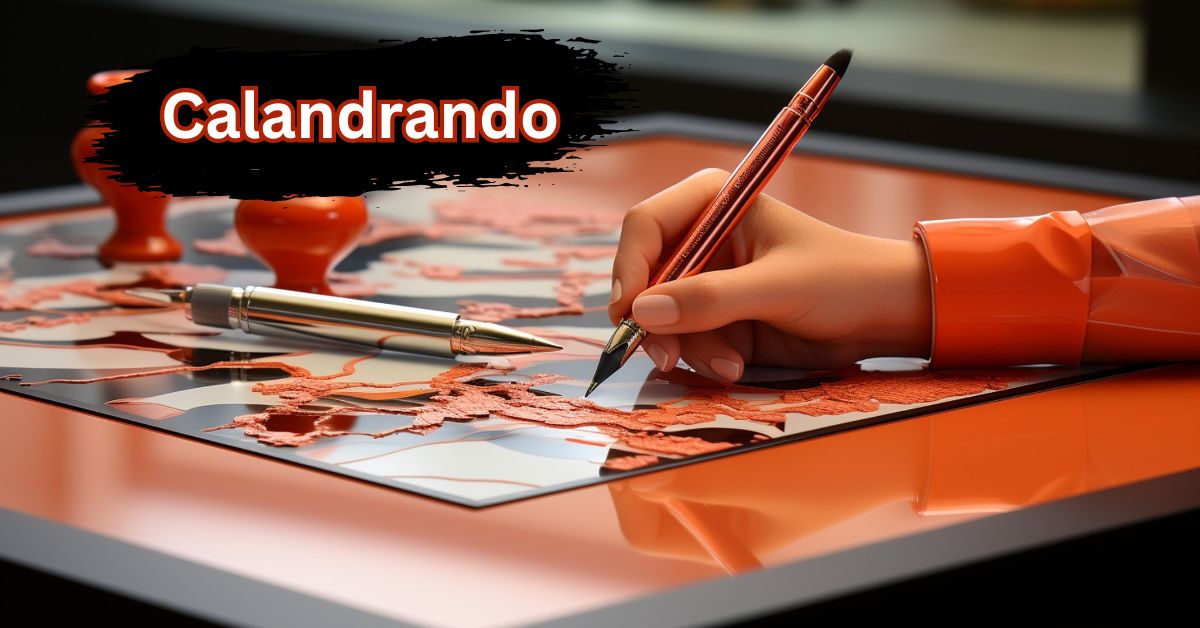Textile finishing is an integral process in the world of fabric production, and one technique that has stood the test of time is Calandrando. Rooted in centuries-old traditions, this art of textile finishing has evolved, offering modern methods of creating smooth, lustrous fabrics while preserving its rich historical significance. This blog post dives deep into the fascinating world of Calandrando, its origins, techniques, and the impact it has had on the textile industry.
What is Calandrando?
Calandrando is an ancient textile finishing process where fabrics are passed through heavy rollers, often called “calenders,” to achieve a smooth, glossy surface. This process enhances the fabric’s texture, making it look and feel more luxurious. While its origins can be traced back to Europe, particularly in Italy, the technique has spread globally and remains a key component in the production of high-quality textiles.
Historical Origins of Calandrando
The word “Calandrando” derives from the term “calender,” which refers to the machine used in the process. Historically, the method began in Italy during the Renaissance period, when craftsmen sought ways to enhance the appearance of fine fabrics like silk and linen. The calendering process involved applying pressure and heat to fabrics, a technique that was gradually refined over time.
In the early days, artisans manually operated the calendering machines, ensuring precision by closely monitoring the fabric’s movement through the rollers. This hands-on approach made the process highly skilled and respected. As the textile industry industrialized, Caland-rando became more mechanized, but the essence of the technique remained unchanged.
The Calandrando Process
The Calandrando technique involves passing fabric between two or more rollers, often heated, to compress and smoothen its surface. The fabric may be treated with a finish before going through the rollers, depending on the desired result.
Here are the basic steps in the Calandrando process:
- Preparation: The fabric is pre-treated, often with starch or other finishing agents, to ensure an even surface.
- Calendering: The fabric is fed between two or more heated rollers. The pressure and heat applied give the fabric a smooth and sometimes shiny finish.
- Cooling: After passing through the rollers, the fabric is cooled down to maintain its newly acquired texture and sheen.
- Final Touches: In some cases, fabrics may undergo additional processes like embossing or glazing to create unique patterns or enhance the shine further.
Modern Applications of Calandrando
Today, Calandrando continues to play a crucial role in the production of textiles. From clothing to home furnishings, the technique is widely used to enhance the quality of fabrics, giving them a high-end, polished look. Modern machinery has made the process faster and more efficient, but the traditional art form still thrives, particularly in high-fashion and luxury fabric manufacturing.
The Calandrando process is used to finish a variety of fabrics, including:
- Cotton: Often used for bed linens and high-quality shirts, calendering provides a smooth finish that enhances the fabric’s softness.
- Silk: Calendering gives silk fabrics a glossy, luxurious sheen, making them perfect for evening gowns and upscale garments.
- Polyester and Synthetic Blends: Even synthetic fabrics benefit from the process, giving them a high-quality appearance suitable for both fashion and interior decor.
Why is Calandrando Still Relevant?
The continued relevance of Calandrando lies in its ability to enhance the aesthetics of textiles while preserving their natural qualities. In an age where synthetic processes often dominate, the art of Calandrando offers a balance between tradition and innovation, delivering fabrics that look beautiful, feel great, and stand the test of time.
For fashion designers and manufacturers, Caland-rando is indispensable. It allows them to transform simple fabrics into luxurious materials that appeal to modern consumers’ growing demand for quality and elegance.
Conclusion
The art of Calandrando has been a cornerstone of textile finishing for centuries, and it continues to influence modern fabric production. Whether you’re looking at a beautifully finished silk gown or a luxurious cotton bedspread, chances are that Caland-rando played a key role in creating that smooth, lustrous appearance. By embracing both tradition and modernity, this ancient technique remains a vital part of the textile industry.











